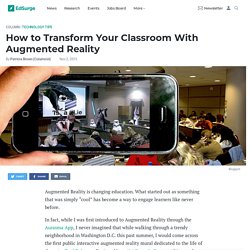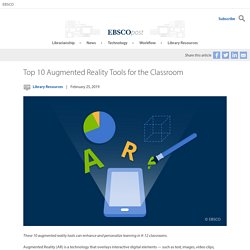

Perspectives on how to evaluate augmented reality technology tools for education: a systematic review. This section describes and discusses the results of the systematic review.

The search in the databases using the search strings returned 607 articles, and 148 papers remained after the pre-selection phase. Finally, after applying the inclusion criteria, 45 papers were eligible for this study. The results from all the papers are available in an online database, which can be collaboratively updatedFootnote 2. Quality of report The quantitative and qualitative assessments are available at Appendixes A.1 and A.2, respectively. Descriptive questions Questions 1 and 2 are in this category. Papers according to the year of publication Table 2 presents the institutions involved in the research.
Table 3 shows the venues where the studies have been published. Figure 4 evidences that the methodology most commonly used is the experimental design, while the quasi-experimental design appeared in fourth place. Papers according to the design methodology Papers according to the target population Quality of report. Augmented Reality An Overview and Five Directions for AR in Educ. The Impact Of Augmented Reality In Education. Augmented Reality for Autistic Students. How to Transform Your Classroom With Augmented Reality. Augmented Reality is changing education.

What started out as something that was simply “cool” has become a way to engage learners like never before. In fact, while I was first introduced to Augmented Reality through the Aurasma App, I never imagined that while walking through a trendy neighborhood in Washington D.C. this past summer, I would come across the first public interactive augmented reality mural dedicated to the life of the actor Paul Robeson. Designed by artist Corey L. Stowers, this mural allows viewers to scan and thus trigger images of his artwork with their mobile devices, accessing historical videos and original content that depict the life of the great athlete, performer, and civil rights activist.
It was at this moment that I realized that Augmented Reality was a way to bring a new dimension to learning. What is “Augmented Reality”? How can I start using AR in my classroom? And why exactly should I start doing this? What are the best AR apps and resources out there? Top 12 Augmented Reality Apps for Education. Top 10 Augmented Reality Tools for the Classroom. Library Resources | February 25, 2019 These 10 augmented reality tools can enhance and personalize learning in K-12 classrooms.

Augmented Reality (AR) is a technology that overlays interactive digital elements — such as text, images, video clips, sounds, 3D models and animations — into real-world environments. Not only does AR enhance learning, but it also provides students with opportunities to create their own content. Teacher librarians and technology integration specialists are often the ones to help their fellow educators integrate new technologies into classroom instruction. A search of the internet reveals a variety of web-based AR tools and apps for almost any subject. Not only does AR enhance learning, but it also provides students with opportunities to create their own content. Here are 10 contenders, in alphabetical order: 3DBear Users can build and share scenes using 3D models with this app’s object library or content imported from Thingiverse. Libraries, Schools, Technology. 6 Exciting AR Apps for Student Learning.
Augmented reality (AR) can serve a variety of purposes in your classroom. This exciting technology layers virtual content on top of the real world, providing an opportunity for students to interact with content in a completely new way. It's important to think of augmented reality as more than just a gimmick. Sure, it grabs students' attention, but you want to make sure that it also sustains meaningful learning.
I've written a new book all about using scannable technology for deeper learning, and it is a topic that connects to multiple learning environments. Moving beyond the gotcha factor is doable and necessary! 1. Formerly known as ColAR, Quiver is a fantastic, easy-to-use, augmented reality app. 2. DAQRI, a terrific AR developer, has produced a handful of apps that you'll want to check out. 3. Blippar is an AR creation tool that has been integrated with different educational experiences. (2) Augmented reality in the classroom - 8 fun AR apps.